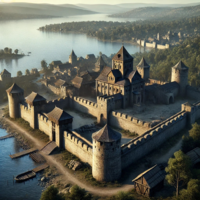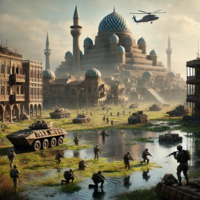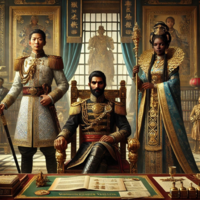Bassaridia Vaeringheim: Difference between revisions
NewZimiaGov (talk | contribs) |
NewZimiaGov (talk | contribs) |
||
| Line 384: | Line 384: | ||
| [[File:FerrumCitadelBattleship.png|150px|border|]] || Ferrum Citadel Class Battleship || || || || || || || | | [[File:FerrumCitadelBattleship.png|150px|border|]] || Ferrum Citadel Class Battleship || || || || || || || | ||
|- | |- | ||
| [[File: | | [[File:AithraAircraft.png|150px|border|]] || Aetherium Class Patrol Ship || || || || || || || | ||
|- | |- | ||
| [[File: | | [[File:AetheriumPatrolShip.png|150px|border|]] || Aithra Class Proximity Aircraft || || || || || || || | ||
|- | |- | ||
| [[File:ThalassaHelicopter.png|150px|border|]] || Thalassa Class Attack Helicopter || || || || || || || | | [[File:ThalassaHelicopter.png|150px|border|]] || Thalassa Class Attack Helicopter || || || || || || || | ||
Revision as of 03:10, 21 November 2024
| Bassaridia Vaeringheim | |||
| |||
| Motto: | |||
| Anthem: the Ballad of Old Lake Morovia | |||

| |||
| Map versions | TBA | ||
| Capital | TBA | ||
| Largest city | Vaeringheim | ||
| Official language(s) | |||
| Official religion(s) | |||
| Demonym | Bassaridian | ||
| - Adjective | Assorted | ||
| Government | |||
| - Council of Kings | TBA | ||
| - Legislature | TBA | ||
| Establishment | 47.58 PSSC (6/9/2023) | ||
| Area | ~ 1,015,056 sqkm | ||
| Population | 40,192,727 (49.52 PSSC) | ||
| Currency | Poli | ||
| Calendar | |||
| Time zone(s) | |||
| Mains electricity | |||
| Driving side | |||
| Track gauge | |||
| National website | |||
| National forum | N/A | ||
| National animal | Upper Haifan Wooly Lion | ||
| National food | Swamp Shark Soup | ||
| National drink | Ale of the Night | ||
| National tree | Nightmare Pine | ||
| Abbreviation | VAE | ||

The Associate Domain of Bassaridia Vaeringheim is a nation established in the aftermath of the collapse of the Haifo-Pallisican Imperial Trade Union in the 47th Era PSSC, when rogue forces once loyal to the New Zimian War League seized control of the General Port of Lake Morovia and expelled local, mostly Alperkin chieftans from positions of power in the local government.
Geography


Bassaridia Vaeringheim occupies the northern shores of Lake Morovia, including the city of Vaeringheim and large portions of the territory once controlled by the Alperkin. Bassaridian influence extends to a lesser extent to the cities of the former Maritime Markets of the Strait of Haifa, namely Jogi and the historic capital of the Bassarid Religion, Mylecia-Agripinilla.

The main portion of Bassaridia Vaeringheim's recognized claims can be broken up into three different political divisions, including Bassarid Vaeringheim Proper, Alpazkigz Alperkin, and Odiferaen Alperkin. The first of these political regions serves as the nation's administrative center, and encompasses the nation's capital city of Vaeringheim, as well as the cities of Luminaria, Serena, Lunalis Sancta, Sylvapolis, Delphica, Symphonara, Aurelia, Ferrum Citadel, and Catonis Atrium. Alpazkigz Alperkin encompasses the nation's western periphery, including lands once entirely controlled by the government of the Alpazkigz, the national government of former Alperkin and includes cities such as Pyralis, Nexa, Acheron, Saluria, Erythros, Aetherium, Koinonía, and Aureum. Odiferaen Alperkin represents the nation's southernmost regions, and includes lands formerly governed by the Odiferian Alperkin tribal Chieftans, including the city of Somniumpolis.

The nation can furthermore be broken up into several different physical geographic regions including the Plains of Vaeringheim, the Coastal Woodlands, the Southern Odiferae Wetlands, the Gloom Forest of Perpetual Autumn, and the Northern and Western Highlands. The Plains of Vaeringheim are characterized by vast, open plains which are ideal for agriculture, and are an important contributor to the nation's economic strength. The Coastal Woodlands span across the nation's southeastern coastal region, and are characterized by sparse, swampy marshes and forests. The Southern Odiferae Wetlands are characterized by dense, heavily forested swamps which are the traditional home of the tribes of Odiferian Alperkin. The Gloom Forest of Perpetual Autumn is the spiritual center of the Alperkin religion, and is characterized by a dense, autumnal rainforest. The Northern and Western Highlands are mountainous regions which historically mark the nation's northern and western borders.

In the mid-49th Era PSSC, Bassaridia Vaeringheim was expanded to include the traditional homeland of the Normarkian people along the northern Strait of Haifa, following the New South Jangsong Campaign. A number of major cities were annexed following this brief war, including the de facto capital of the newly designated region of New South Jangsong Skýrophos, Bjornopolis, Aegirheim, Norsolyra, and Thorsalon. In addition to these, several smaller cities were also annexed, including Pelagia, Myrene, Thyrea, Ephyra, and Halicarn.
History
Establishment by the Kingdom of Normark
The city of Vaeringheim was originally established by the Kingdom of Normark, an ancient maritime kingdom renowned for its strategic settlements and naval power. Located on the northern shores of Lake Morovia, Vaeringheim was founded as a fortified outpost, strategically positioned to control lucrative trade routes and protect against potential invasions. The city’s fortifications and its access to both inland trade routes and the waterways of the Strait of Haifa made Vaeringheim a key military and trading outpost for Normark, contributing significantly to the kingdom’s prosperity.
Transition to the Maritime Markets
As the Kingdom of Normark’s influence waned, Vaeringheim entered a new phase of its history. The weakening of centralized control in the region led to a rise in piracy along the Strait of Haifa. Vaeringheim, with its established infrastructure and strategic location, quickly became a prominent player in the Maritime Markets of the Strait of Haifa. These markets were a confederation of pirate havens and freeports that thrived on the wealth generated from plundering ships passing through the region.
During this period, Vaeringheim evolved from a fortified trading post into a bustling center of commerce, heavily influenced by the trade of goods obtained through piracy. The city attracted a diverse population of merchants, sailors, and adventurers, contributing to its rapid growth and the development of a thriving black-market economy. Vaeringheim’s reputation as a hub for both legitimate and illicit trade solidified its importance in the region.
Integration into the Haifo-Pallisican Empire
As the Haifo-Pallisican Imperial Trade Union rose to prominence, Vaeringheim’s role shifted from that of a pirate stronghold to a crucial member of the imperial trade network. This transformation was particularly evident during the Strait of Haifa Campaign, a brutal conflict that was part of the larger War of Lost Brothers. The campaign was marked by extreme violence, espionage, and subversion, with Vaeringheim playing a critical role as a strategic base for Bassarid military operations. The city’s fortifications were further strengthened to defend against external threats, cementing its position as a vital asset for the Haifo-Pallisican Empire. The successful integration of Vaeringheim into the empire established the city as a central hub in the expansive trade network.
The Bassarid Periphery and Alperkin Influence
Following the War of Lost Brothers, Vaeringheim became part of the Bassarid Periphery, a region influenced by the Alperkin, a nomadic people known for their deep spiritual connection to nature and communal lifestyle. The Alperkin’s influence brought significant cultural and religious changes to Vaeringheim, contributing to the emergence of the Reformed Stripping Path. This religious movement combined elements of the Hostian, Pallisican, Alperkin, and Bassarid religious philosophies, creating a unique spiritual framework that emphasized divine protection, communal spirituality, and ritual practices. The Reformed Stripping Path became a defining aspect of Vaeringheim’s cultural identity, shaping its social and religious structures.
The Hammish Civil War
The Hammish Civil War, which erupted in the nearby region of Hammish, had significant implications for Vaeringheim. The civil war, characterized by intense conflict and the fragmentation of the Hammish state, led to widespread instability. Vaeringheim, given its proximity and strategic importance, became involved in the conflict as various factions sought support from neighboring powers. The instability disrupted trade routes and led to an influx of refugees into Vaeringheim. The city’s leaders, while attempting to maintain neutrality, navigated the complex political landscape by providing humanitarian assistance to refugees and securing its borders against potential spillover from the civil war. The Hammish Civil War ultimately reshaped the region's geopolitical landscape, and Vaeringheim’s adaptability during this period helped maintain its stability and influence.
The Haifan Civil War
Vaeringheim’s stability was further tested during the Haifan Civil War, a conflict that erupted as various factions within the Haifan territories vied for power. The civil war had significant ramifications for the region, including Vaeringheim. As the conflict unfolded, Vaeringheim’s leaders had to balance maintaining local autonomy with responding to the demands of the warring Haifan factions. The city's strategic importance made it a key asset that multiple factions sought to control. However, through careful diplomacy and strategic alliances, Vaeringheim managed to retain a degree of independence and emerged from the civil war with its influence intact. The aftermath of the Haifan Civil War further solidified Vaeringheim's role as a central power in the region, particularly through its contributions to reconstruction efforts and the re-establishment of disrupted trade networks.
The Greater Morovian Independence Initiative
As Vaeringheim became increasingly integrated into foreign-controlled networks, local resistance grew, leading to the rise of the Greater Morovian Independence Initiative. This movement sought to oppose external influence in the region and establish Morovian autonomy. The initiative gained widespread support, driven by a desire for self-determination and the preservation of local culture. However, it faced significant opposition from the Bassaridian War League. The capture of the Independent Port of Lake Morovia by the War League marked a turning point, severely weakening the independence movement. This was followed by the Morovian Frontier Campaign, a series of military operations that consolidated control over the region. The establishment of the General Port of Lake Morovia effectively ended the Greater Morovian Independence Initiative, as Vaeringheim’s leadership aligned with the Bassaridian War League to secure control over this critical port.
Establishment of Bassaridia Vaeringheim
In the aftermath of these events, Bassaridia Vaeringheim was established as a sovereign state. The nation, with its blend of Normark fortifications, Alperkin yurts, Haifan architectural influences, and modern infrastructure, declared Vaeringheim as its capital. In the modern era, Bassaridia Vaeringheim further expanded its influence through the successful New South Jangsong Campaign, demonstrating its military capabilities and ability to integrate diverse territories into its expanding domain. This campaign not only secured valuable resources and strategic advantages for the nation but also reinforced its status as a dominant regional power.
Modern Era
Today, Bassaridia Vaeringheim is a significant political and economic power in the region surrounding Lake Morovia. With the General Port of Lake Morovia serving as a central hub for trade, the nation has established itself as a key player in both local and international commerce. The nation's successful expansion through the New South Jangsong Campaign has further strengthened its influence, making Bassaridia Vaeringheim a dominant force with a well-organized military and a diverse, prosperous economy that spans urban centers and rural areas alike.
Culturally, Bassaridia Vaeringheim is shaped by a blend of traditions, most notably the Reformed Stripping Path, which continues to influence the nation’s social and religious life. Public rituals and festivals associated with this movement foster a strong sense of unity among the people. The nation's leadership remains focused on maintaining its strategic and economic advantages, ensuring that Bassaridia Vaeringheim continues to thrive as a leading power in the region.
Politics
The political structure of Bassaridia Vaeringheim embodies a complex and multifaceted approach to governance, reflecting its historical, cultural, and economic development. Centralized authority is carefully balanced with regional autonomy, a structure shaped by both internal and external conflicts. The most transformative moment in the nation's political history came with the establishment of the national legislature in 50.43 PSSC. This change was driven by public outrage following the Gulf of Jangsong Crucifixions, a violent and divisive event that exposed systemic weaknesses in governance and human rights protections. In response, the nation ratified its first formal constitution, known as the Bassaridian Constitution of 50.43 PSSC, creating a bicameral legislature designed to ensure broader representation, accountability, and transparency in governance.
The Council of Representatives and the Senate of Elders work alongside the Council of Kings, which oversees military, economic, and religious governance. Together, these governing bodies strive to maintain social cohesion, promote prosperity, and respect the traditions of the nation’s diverse populace. The introduction of the legislature provided citizens and various factions—ranging from powerful trade guilds to indigenous groups—with a direct voice in the nation's governance, fostering a more inclusive political landscape.
National Government
The Council of Kings functions as the central authority, with leadership divided among three key branches: military, economic, and religious. The Commander General of the Bassaridian War League leads military operations, the Merchant General of the General Port of Lake Morovia oversees trade and economic growth, and the High Priestess of the Bassarid Temple of Vaeringheim governs religious and cultural matters. These leaders work in coordination with the bicameral legislature to develop, implement, and enforce national policies.
The Council of Representatives serves as the lower legislative chamber and represents citizens from all regions, including both major and minor cities, as well as Alperkin tribes that request formal representation. Each city elects three representatives, ensuring that urban and rural communities are equally represented. Recognized Alperkin tribes receive one representative each, reflecting their unique status and historical significance. This council introduces and debates legislation, addressing issues ranging from infrastructure development and trade policy to civil rights and social welfare.
The Senate of Elders functions as the upper legislative chamber and represents key societal institutions, including religious, economic, and military organizations. It is composed of two representatives from each Reformed Stripping Path cult, each company headquartered at the General Port of Lake Morovia, and each division of the Bassaridian War League. The Senate reviews, amends, and approves legislation proposed by the Council of Representatives, offering a long-term perspective rooted in tradition and stability. Proposed bills must pass through both chambers and ultimately receive unanimous approval from the Council of Kings to become law, ensuring that all major aspects of governance are considered.
Municipal legislative bodies within major cities mirror the structure of the national legislature, consisting of a lower house of elected representatives and an upper house comprised of military leaders, business leaders representing local companies, and representatives from major Reformed Bassarid cults based in each city. These municipal legislatures possess the authority to draft and enact laws relevant to their cities, as well as govern surrounding minor cities, towns, and villages. Their structure ensures local representation and decision-making while maintaining consistency with national laws and principles established by the Council of Kings.
Commander General of the Bassaridian War League
The Commander General holds responsibility for the defense and security of Bassaridia Vaeringheim, directing military operations, intelligence activities, and strategic initiatives to protect the nation’s borders and interests. This role encompasses not only traditional military functions, such as maintaining armed forces and fortifying borders, but also covert operations and espionage. The Commander General works closely with local militias, regional defense networks, and specialized units that operate in sensitive areas, such as the Strait of Haifa, a critical point for both trade and military strategy. Legislative oversight from the Senate of Elders, which includes representatives from the Bassaridian War League, ensures that military strategies align with national interests and maintain public accountability.
Merchant General of the General Port of Lake Morovia
The Merchant General serves as the nation’s economic steward, overseeing the General Port of Lake Morovia, a major hub of trade and commerce. This role involves managing trade policies, negotiating international trade agreements, and regulating the flow of goods, including high-value commodities. The Merchant General ensures that profits from trade are distributed equitably, with a focus on economic development and public welfare. Policies concerning taxation, market regulation, and investment incentives undergo rigorous review by the Council of Representatives and the Senate of Elders to ensure that the economic benefits reach all citizens. The Merchant General also works with private companies and trade guilds to foster innovation and competition, prevent monopolization, and promote economic stability.
High Priestess of the Bassarid Temple of Vaeringheim

The High Priestess leads religious and cultural affairs, guiding the nation’s adherence to the Reformed Stripping Path, a faith blending elements of Hostian, Pallisican, and Bassarid beliefs. The High Priestess plays a crucial role in shaping religious policies, mediating disputes, and fostering unity among different religious sects and communities. This position involves close collaboration with the Saint Mothers, influential leaders who represent indigenous traditions and customs. The High Priestess ensures that religious laws and customs are integrated into national policies, working alongside representatives from Reformed Stripping Path cults in the Senate of Elders to maintain spiritual harmony and cultural preservation.
Government Presence
The Council of Kings extends its influence across Bassaridia Vaeringheim through a network of Embassies of the Council of Kings located in major urban centers. These embassies manage political, economic, and social affairs on behalf of the central government, while local governance in smaller regions is overseen by appointed delegates working in collaboration with Clan Chieftains. This structure allows the government to maintain centralized oversight while respecting the autonomy and traditions of local communities. The addition of the Council of Representatives and Senate of Elders strengthens local representation, providing avenues for citizen engagement and ensuring that regional voices are heard at the national level.
Rule of Law and Judicial System
The judicial system of Bassaridia Vaeringheim blends secular and religious courts to reflect the nation’s diverse traditions and legal needs. Secular courts, presided over by judges appointed by the Council of Kings, handle a broad range of issues, including civil disputes, criminal cases, and matters of commerce and national security. These courts ensure consistent application of laws passed by the national legislature and provide a framework for legal redress and accountability.
Religious courts, led by the High Priestess and other religious authorities, address issues related to the Reformed Stripping Path. These courts handle matters such as family law, religious observance, and moral conduct, ensuring adherence to religious doctrines and customs. Their rulings must align with national law and constitutional principles, maintaining a balance between spiritual and secular governance.
Tribal courts, led by local clan authorities, preserve indigenous legal traditions, offering a distinct legal framework for the Alperkin and other recognized tribes. These courts function independently, provided their decisions do not conflict with national law. The Council of Representatives and Senate of Elders shape laws that respect cultural diversity, fostering a legal system that accommodates multiple traditions and upholds justice for all citizens.
Social Services
Social services in Bassaridia Vaeringheim are administered through a unique economic model centered around the General Port of Lake Morovia. All citizens receive goods, products, and essential services through stipends allocated by Regional Investors, who invest in the General Port to support economic growth and public welfare. These stipends enable access to healthcare, education, infrastructure development, and other vital services. By allocating resources equitably, this system ensures that wealth generated through trade and commerce benefits the entire population, bridging the gap between urban elites and rural or tribal communities.
The Council of Representatives and Senate of Elders shape and review policies governing resource distribution, ensuring that economic gains are reinvested into social welfare. Partnerships with tribal economies and organizations, such as the Bulhanu Ranchers' Association and the Norsolyrian Wisp Rice Farmers, highlight the government’s commitment to fostering prosperity and social cohesion. Investments at the General Port of Lake Morovia support both local and national economic initiatives, creating a sustainable model of development and social welfare that reaches even the most remote communities.
Foreign Policy

Bassaridia Vaeringheim’s foreign policy is grounded in a strong isolationist stance, emphasizing internal stability, cultural preservation, and economic self-sufficiency over external entanglements. While capable of strategic engagement when necessary, such as during Operation Thunder Drop, the nation largely avoids permanent foreign alliances. This isolationist approach reflects not only Vaeringheim’s geographic realities and historical experiences but also its unique system of government. The nation's governance, led by the Council of Kings is designed to prioritize internal cohesion, cultural identity, and economic independence.
Bassaridia Vaeringheim’s geographic position in east/central Keltia, along the Strait of Haifa, reinforces its isolationist policy. Surrounded by natural barriers such as rugged terrain, extensive albeit remote waterways, and dense wilderness, the nation enjoys a level of separation from other global powers that facilitates self-reliance. This isolation supports the Council of Kings’ ability to maintain centralized control over all aspects of national life—military, economic, and religious—without interference from foreign entities. The structure of the government is inherently inward-focused, emphasizing the well-being of its citizens and the strength of its internal systems over external alliances.
Although isolationist by nature, Bassaridia Vaeringheim’s government retains the flexibility to engage in strategic actions when necessary. Operation Thunder Drop, conducted in cooperation with the Imperial Federation to stabilize Haifan Bassaridia, demonstrates the nation’s willingness to act decisively to protect its economic and territorial interests. Such actions, however, are guided by the Council of Kings and reflect a collective decision-making process that prioritizes national interests over long-term foreign commitments. This selective engagement highlights the government’s emphasis on safeguarding Vaeringheim’s autonomy while preserving the central authority of its leaders.
Unlike many nations that rely on royal marriages and familial alliances to establish diplomatic ties, Bassaridia Vaeringheim deliberately distances itself from such practices. The Council of Kings and the Reformed Stripping Path uphold a system of governance that focuses on self-governance, cultural integrity, and the preservation of indigenous traditions. This approach reflects a deep-seated belief that the nation's strength lies in its internal unity and autonomy, free from the complexities and potential entanglements of foreign dynastic politics. By avoiding these alliances, the nation’s government can maintain its distinct identity and prioritize the needs of its citizens without external influence.
Bassaridia Vaeringheim’s isolationist foreign policy is further reinforced by its highly developed internal market, centered around the General Port of Lake Morovia. This economic hub supports extensive regional trade, enabling the nation to achieve a high degree of self-sufficiency. The economic system, guided by Regional Investors, ensures the equitable distribution of resources and minimizes dependence on foreign trade partners. By focusing on internal prosperity and economic stability, Bassaridia Vaeringheim can maintain its isolationist stance without compromising its citizens’ welfare. The strength of its internal market underscores its ability to thrive independently of external influences.
The international community’s reluctance to engage with Bassaridia Vaeringheim is further shaped by the brutal legacy of Bassarid involvement in military conflicts, including the Hammish Civil War, the Haifan Civil War, the War of Lost Brothers, and the War of the Harpy. These conflicts were marked by extreme violence, strategic subterfuge, and territorial ambition, leaving a lasting impression on the global stage. The Bassaridian reputation for ruthlessness and decisive military action has served as a deterrent, discouraging other nations from pursuing diplomatic or economic ties. Combined with its geographic isolation and economic self-reliance, this legacy reinforces Vaeringheim’s preference for a cautious and selective approach to foreign affairs.
Economy
The economy of Bassaridia Vaeringheim is supported and sustained by ongoing investments in the reformed General Port of Lake Morovia, a Bassarid-style marketplace which has served the economic interests of the Haifan and Bassarid peoples of Lake Morovia and the central Strait of Haifa since approximately 37.71 PSSC. Control of the General Port was seized in 47.58 PSSC, by military forces once loyal to the New Zimian War League.
Population Distribution
The population of Bassaridia Vaeringheim is represented on the General Port of Lake Morovia by six distinct Regional Investors. These include the Alpazkigz Division which invests in the market on behalf of the people of Alpazkigz Alperkin, the Odiferian Division which invests on behalf of the people of Odiferaen Alperkin, the Vaeringheim Division which represents the people of Bassarid Vaeringheim Proper, the Hafaa and Jeseri Divisions which represent the nation's Haifan and Jeseri populations, and the Hatch Ministry Division which represents those associated with the Hatch Ministry community of privateers. Of these, the largest investors are the Alpazkigz and Odiferian Divisions, and the Hatch Ministry Division. In the mid-49th Era, a seventh Regional Investor was created - the New South Jangsong Division - in order to represent the financial interests of the Normarkians inhabiting newly annexed territories along the northern Strait of Haifa. Similarly, an eighth Regional Investor was created in 50.27 PSSC following an agreement between Bassaridia Vaeringheim and the Imperial Federation, in order to represent the financial interests of citizens inhabiting the newly annexed territories of Haifan Bassaridia, including major cities such as Jogi and Tel-Amin
49.98 PSSC
| Region | Population |
|---|---|
| Alpazkigz Division | 13,694,484 |
| Odiferia Division | 12,430,949 |
| Vaeringheim Division | 14,716,460 |
| Hafaa Division | 681,318 |
| Jeseri Division | 350,982 |
| Hatch Ministry Division | 4,031,129 |
| New South Jangsong Division | 5,721,365 |
| Total | 51,626,687 |
Economic Strength
The economy of Bassaridia Vaeringheim is strong relative to other nations of similar sizes. The nation enjoys a high level of economic diversity, with a broad range of businesses in the agricultural, manufacturing, and service sectors. The nation's economy is furthermore characterized by a high level of growth, with new businesses regularly joining the General Port of Lake Morovia.
Wealth Distribution
Wealth in Bassaridia Vaeringheim is distributed according to a three-tiered system based on levels of investment in the General Port of Lake Morovia. Citizens represented by the largest investors in the Port enjoy the highest levels of wealth, while those represented by smaller investors enjoy smaller levels of wealth. As of 48.02 PSSC, the nation's wealthiest citizens were those represented by the Alpazkigz and Odiferia Regional Investors, while the least wealthy were those represented by the Hafaan and Jeseri Investors.
Agriculture and Trade
Bassaridia Vaeringheim maintains a rich and vibrant agricultural sector which is more than twice as large as its manufacturing sector, and more than three times larger than its service sector. As of 48.02 PSSC there were sixteen companies registered on the General Port as exporters of agricultural goods and products. Most notable among these are the Gladseed Farmers Union, the Plains of Jogi, and the Camel Herders of the Jangsong Province.
Military
The Associate Domain is defended by the Bassaridian War League, a substantial military force which once comprised a large portion of the Leagues of Haifan Keltiania under the banner of the New Zimian War League, and which declared independence from the War League following the collapse of the Bassarids. The Bassaridian War League, with this said, maintains the organizational and command structures which were in place prior to its declaration of independence from the New Zimian War League.
The War League utilizes equipment historically manufactured in several countries, namely the Bassarids, Jingdao, Krasnocoria, and Nova England.
Military Influence

The Bassaridian War League exerts the majority of its influence in the region surrounding Lake Morovia in central Keltia. It exerts lesser degrees of influence along the Northern and Southern Straits of Haifa, to the extent that it regularly conducts operations intended to defend shipping lanes between Bassaridia Vaeringheim and territories formerly associated with the Maritime Markets of the Strait of Haifa and the Bassarid Periphery in Keltia.
Bassaridian War League
Pre-50.48 PSSC
Post 50.48 PSSC
| Image | Unit | Total | Vaeringheim Division | Alpazkigz Division | Odiferia Division | Jeseri Division | Hatch Ministry Division | New South Jangsong Division |
|---|---|---|---|---|---|---|---|---|
 |
Active Units | |||||||
 |
Reserve Units | |||||||
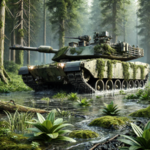 |
Makra Class Battle Tank | |||||||
 |
Laya Class Heavy Tank | |||||||
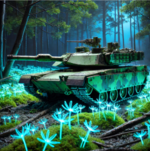 |
Arachne Class Light Tank | |||||||
 |
Thalassa Class Main Battle Tank | |||||||
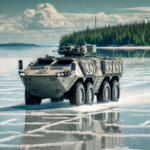 |
Syrinx Class Armored Infantry | |||||||
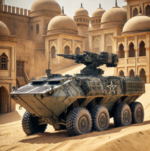 |
Ephyra Class Anti-Aircraft Vehicle | |||||||
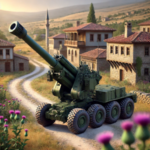 |
Aithra Class Howitzer | |||||||
 |
Iynas Class Field Gun | |||||||
 |
Kalithros Class Rifle | |||||||
 |
Delphica Class Grenadier Rifle | |||||||
 |
Chrysos Class Commando Rifle | |||||||
 |
Lothaya Class Sniper Rifle | |||||||
 |
Erythros Class Pistol | |||||||
| File:SymphonaraHelmet.png | Symphonara Class Helmet | |||||||
 |
Kalypso Class Aircraft Carrier | |||||||
 |
Xylanda Class Attack Submarine | |||||||
 |
Saluria Class Gunboat | |||||||
 |
Cetus Class Attack Craft | |||||||
 |
Eidolon Class Cruiser | |||||||
 |
Vaeringheim Class Corvette | |||||||
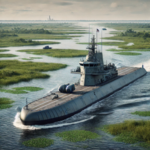 |
Acheron Class Submersible Destroyer | |||||||
 |
Luminaria Class Carrier | |||||||
 |
Sylvapolis Class Frigate | |||||||
 |
Ferrum Citadel Class Battleship | |||||||
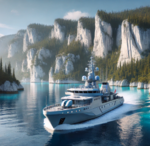 |
Aetherium Class Patrol Ship | |||||||
 |
Aithra Class Proximity Aircraft | |||||||
 |
Thalassa Class Attack Helicopter | |||||||
 |
Catonis Class Unmanned Aircraft | |||||||
 |
Chrysos Class Sea Bomber | |||||||
 |
Quadwalker "Horehound" 4170 | |||||||
 |
Quadwalker "Dungbeetle" 4172 | |||||||
 |
Quadwalker "Killbot" 4200 | |||||||
 |
Quadwalker "Oble-Lisea" 4189 | |||||||
 |
Symphonara Class Compound Intercept | |||||||
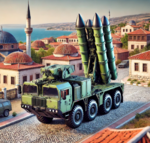 |
Aurelia Class Defense System | |||||||
 |
Nexa Class Advanced Prototype |
Operational Activity
| Date | Formation | Subject | Summary | Operation Image |
|---|---|---|---|---|
| 47.68 PSSC | Vaeringheim Division | Operation "Nenajióz"' | Summary: The Vaeringheim Division monitors and disrupts threats to Bassarid commercial traffic passing through the Abeisan Inlet.
|

|
| 47.68 PSSC PSSC | Alpazkigz Division | Operation "Nazht Séiakaren" | Summary: The Alpazkigz Division monitors and disrupts threats to Bassarid commercial traffic passing through the Caledonian Highlands.
|
 . .
|
| 46.78 PSSC | Odiferia Division | Operation "De Séiakaren" | Summary: The Odiferia Division monitors and disrupts threats to Bassarid commercial traffic passing through the Central Keltian Valley.
|
 . .
|
| 46.78 PSSC | Jeseri Division | Operation "Häme frebéiot" | Summary: The Jeseri Division monitors and disrupts threats to Bassarid commercial traffic within the borders of Bassaridia Vaeringheim.
|

|
| 46.78 PSSC | Hatch Ministry Division | Operation "Ice azdigáit" | Summary: The Hatch Ministry Division monitors and disrupts threats to Bassarid commercial traffic passing through the Northern Strait of Haifa.
|
 . .
|
Major Operations
Morovian Frontier Campaign
In 48.69 the Bassaridian War League participated in the Morovian Frontier Campaign, an extensive military operation carried out across Bassaridia Vaeringheim and surrounding regions, against insurgent para-military forces associated with the Greater Morovian Independence Initiative.
New South Jangsong Campaign
In the period between 49.19 and 49.53 PSSC, the Bassaridian War League participated in the New South Jangsong Campaign, an extensive military operation carried out along the western shores of the Northern Strait of Haifa, with the goal of bringing the region's independent city-states under the control of Bassaridia Vaeringheim.
Haifan Bassaridia Campaign
In 49.43 PSSC, the Bassaridian War League launched the Haifan Bassaridia Campaign as part of a coordinated effort alongside the Imperial Federation to eliminate the influence of rogue pirate factions which has established control over Haifan Bassaridia in the period following the collapse of the Bassarids. The campaign, which ended in 50.10 PSSC, resulted in a restoration of peace and stability in the region, and led to the annexation of Haifan Bassaridia by Bassaridia Vaeringheim.
Culture

The culture of the Associate Domain combines the everyday norms, customs, and traditions of the indigenous Alperkin communities with the political and economic institutions which governed the city of Vaeringheim under the administration of the Bassarids. The culture of Bassaridia Vaeringheim is also heavily influence by that of the Bassarid Haifan population who resides in the region, as well as that of the Bassarid Jezeri. To this end, the Associate Domain represents a blend of cultures and identities which is unique to the region, and to the globe in the Post-Bassarid world.
Demographics

Bassaridia Vaeringheim is home to a wide range of different ethnic groups from across the eastern hemisphere. These include the Pallisican, Kralian, and Aead peoples who originate in former Passas, the Chelkran peoples of Chelkran Kesh, the Gamesman peoples of Northern and central Corum, and the Haifan, Alperkin, Normarkian, and Jezeri peoples of central and northern Keltia. Of these, Haifans, Alperkin, and Normarkians constitute the majority of the nation's people, followed closely by Jezeri, Pallisicans and Kralians. Representing a smaller portion of the nation's population, Chelkrans and Aead. The smallest portion of the nation's population is made of up of Gamesman and Braxians.
Class Relations
Class relations in Bassaridia Vaeringheim are intricately woven into the cultural and religious fabric of the society, which revolves around the practice of the Stripping Path, and to a lesser extent the Reformed Stripping Path. At the top of the social hierarchy are the high priestesses and noble families who are deeply involved in the organization of the nation's predominate religion and of the nation's marketplace. Next is the nation's merchant class, which holds substantial economic influence. Members of this class are often wealthy and play a crucial role in the distribution of goods and services sold and provided through the General Port of Lake Morovia. Below the merchant class is the artisan class, whose skilled artisans and craftsmen, serving at the behest of the nation's priestess and noble class, form the backbone of the nation's economy. These three classes, the priestess and noble class, the merchant class, and the artisan class, form the upper echelons of society in Bassaridia Vaeringheim.
At the highest ranks of the nation's lower social echelons are farmers and laborers, who work to produce the products sold by the merchant class. Despite playing an important role in the nation's social hierarchy, members of the farmer and labor class enjoy a limited degree of social mobility. Next in the ranks of the lower echelons of Bassaridian society are entertainers and performers including musicians, actors, and dancers, who hold a unique position in society, insofar as they are often admired for their ability to channel the divine ecstasy of the gods of the Stripping Path through their ritual performances. Members of this class often serve as servants of the Priestess and noble class, and can enjoy a greater level of social mobility than farmers and laborers.
At the very bottom of the social hierarchy are outsiders and slaves - those who do not adhere to the Bassaridian faith or are considered foreign, including slaves usually captured during the era of the Haifo-Pallisican Imperial Trade Union. Members of this class enjoy limited rights and are often marginalized.
Gender Relations
Gender relations are relatively fluid in Bassaridia Vaeringheim, reflecting the Bassaridian values of freedom and trade. Both men and women can participate in religious ceremonies and festivities, can assume status in any of the nation's social echelons, and women are not confined to traditional domestic roles.
Religious Influence
At the core of the nation's religious identity is the Stripping Path, a religion which features sacred rituals centered around the shedding societal constraints and inhibitions to connect with the divine. Practitioners of the Stripping Path engage in ecstatic ceremonies, often characterized by dancing, music, and the consumption of wine and other varieties of alcohol and various intoxicants. These rituals are considered a means of achieving a heightened state of consciousness and communion with Dionysus and the other higher and lesser gods of the Stripping Path. Such rituals also serve to reinforce the shared spiritual values of freedom, hedonism, and the pursuit of personal enlightenment.
Bassaridia Vaeringheim is known for its vibrant festivals and celebrations, which combine various forms of religious devotion with cultural expression. These events are marked by exciting and often wild processions, colorful costumes which reflect the influence of the Bassarids as well as that of the Alperkin, and the use of alcohol and other substances. Such festivities serve as an affirmation of the people's collective faith and reinforce a strong sense of community.
The religious influence of the Bassarid faith is also apparent in the nation's art and architecture. Temples and public buildings may feature intricate carvings and artwork, mainly including statues, depicting scenes from the life of Dionysus and the religion's other divine entities. These designs reflect the spiritual significance of their surroundings.
The Bassarid faith, furthermore, maintains a significant impact on the social structure of Bassaridia Vaeringheim. Spiritual leaders - mostly consisting of priestesses known as "Maenads," "Bacchantes," or simply "Bassarids," play a crucial role in leading the spiritual community. They are considered intermediaries between the mortal realm and the divine.
In summary, the religious influence of the Stripping Path permeates all aspects of Bassaridian culture, from its rituals and celebrations to its art, architecture, and societal structure, making it a central and enduring aspect of the nation's way of life.


